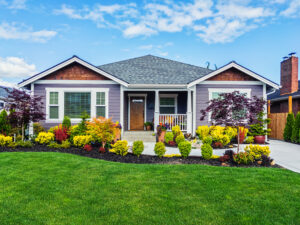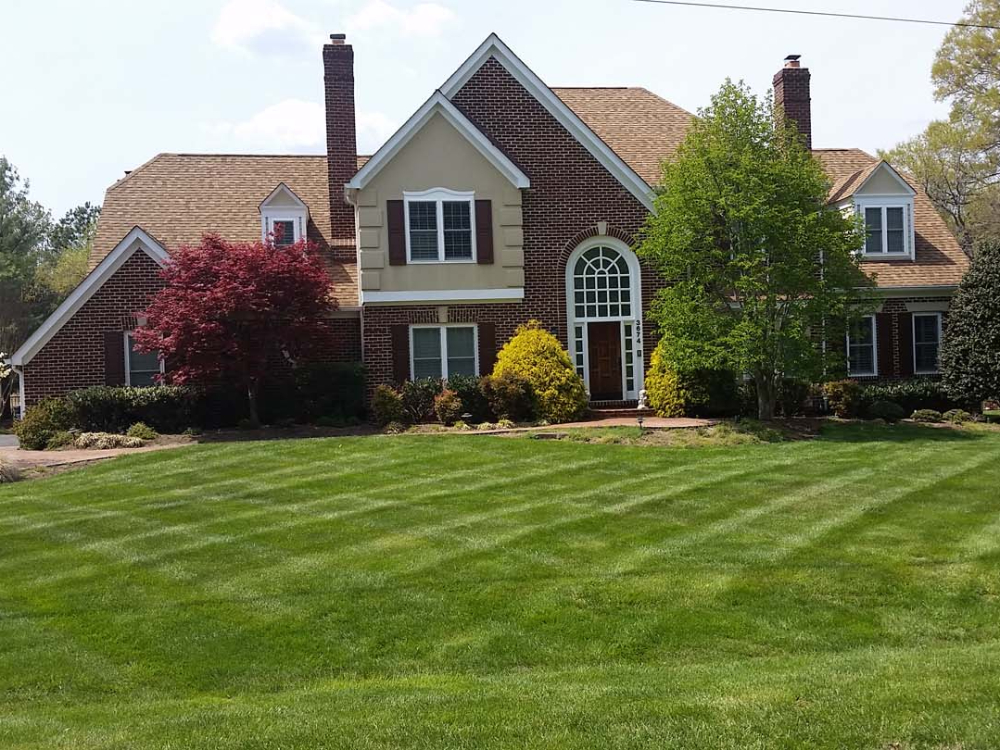Specialist Landscape Design Solutions for Lasting Exterior Improvement
Enhancing outside spaces through professional landscaping solutions can offer greater than simply visual allure; it can cultivate a lasting atmosphere that profits both homeowner and the world. From choosing native plants to implementing water conservation strategies and utilizing green hardscape solutions, the opportunities for sustainable exterior makeover are vast. By recognizing the value of maintenance techniques that sustain sustainability, expert landscaping companies can absolutely make a long-term effect on the outside spaces they service.
Benefits of Lasting Landscaping
Sustainable landscape design offers countless ecological and financial advantages for both building proprietors and the community. By carrying out sustainable practices such as xeriscaping, using native plants, and decreasing water usage, home owners can considerably minimize their ecological influence. These approaches not just save water however additionally promote biodiversity and decrease the demand for dangerous chemicals and fertilizers.

From a community point of view, sustainable landscaping plays a crucial role in enhancing air and water quality, decreasing urban warm island impacts, and supplying environments for neighborhood wild animals. These advantages add to producing healthier and more sustainable atmospheres for every person to take pleasure in.
Native Plants Selection and Design
When intending a landscape layout, choosing indigenous plants is important for optimizing sustainability and ecological community health. Native plants are adapted to the regional environment, dirt conditions, and pests, making them low-maintenance and much more resilient to grow in their native environment. Integrating indigenous plants right into landscape design makes not only improves biodiversity but also supports pollinators, useful bugs, and regional wildlife.
Designing with native plants includes careful factor to consider of aspects such as plant dimension, growth behavior, bloom time, and water demands to develop a aesthetically attractive and lasting landscape. By selecting a varied selection of indigenous plants, landscape designers can produce well balanced communities that bring in a selection of species and add to the total wellness of the atmosphere.
Furthermore, native plants can help in reducing water consumption, reduce the requirement for chemical pesticides and plant foods, and improve soil high quality through their natural processes. With appropriate option and design, indigenous plants can change outside rooms right into prospering, sustainable landscapes that profit both the neighborhood and the environment.
Water Preservation Techniques
Incorporating indigenous plants into landscaping designs not just improves biodiversity yet additionally sustains pollinators, advantageous insects, and local wildlife, which emphasizes the relevance of applying water preservation methods in landscaping practices. Water preservation is important for lasting exterior areas, especially in regions susceptible to dry spell or water shortage. One efficient method is making use of drip official statement watering systems, which supply water directly to the plant's root zone, reducing dissipation and drainage. Mulching is one more beneficial method that aids preserve soil dampness, suppresses weed development, and improves dirt health.

Eco-Friendly Hardscape Solutions
The usage of environmentally mindful products in hardscape layout is an essential aspect of developing sustainable outdoor areas. Eco-friendly hardscape options include an array of techniques intended at reducing ecological effect while enhancing the appearances and performance of exterior locations. Integrating products such as absorptive pavers, recovered timber, recycled plastics, and natural stone can dramatically reduce the environmental footprint of hardscape installments.
Absorptive pavers, for instance, enable rain to permeate right into the ground, reducing overflow and protecting against water air pollution. Redeemed timber includes a rustic appeal to outdoor home while promoting the reuse of existing sources. Recycled plastics can be changed into low-maintenance and resilient hardscape aspects, using a sustainable alternative to conventional materials. Natural rock sourced from neighborhood quarries lowers transport exhausts and blends harmoniously with the surrounding environment.
Maintenance Practices for Sustainability
To maintain the ecological honesty of environment-friendly hardscape remedies, applying strategic upkeep practices is vital for guaranteeing long-lasting sustainability in outside landscape design jobs. Routine upkeep not only protects the aesthetic allure of the landscape yet additionally adds to its total sustainability by minimizing ecological impact.
One trick maintenance practice for sustainability is correct irrigation administration. Effective sprinkling techniques, such as drip irrigation systems or rain harvesting, assistance preserve water and promote plant health. In addition, regular evaluation and modification of watering systems can prevent water wastefulness and make certain optimal hydration for plants.
Another vital element of lasting upkeep is the liable use pesticides and fertilizers. Choosing for organic plant foods and using incorporated insect monitoring approaches reduces hazardous chemical drainage right into the atmosphere, securing both plant and environment balance.
Moreover, routine cleansing and maintenance of hardscape functions like absorptive pavers or rock pathways prevent debris build-up and keep capability while sustaining water infiltration and water drainage, thus decreasing the threat of disintegration web link and flooding. Landscaping San Marcos. By sticking to these lasting upkeep techniques, exterior landscapes can flourish sympathetically while decreasing their environmental footprint
Conclusion
To conclude, sustainable landscape design uses countless advantages through using indigenous plants, water preservation techniques, green hardscape remedies, and sustainable maintenance practices. By applying these methods, outside rooms can be changed right into environmentally-friendly and aesthetically pleasing locations that support biodiversity and decrease environmental effect. Purchasing professional landscape design services that focus on sustainability can bring about long-lasting advantages for both the environment and residential or commercial property owners.
From choosing indigenous plants to applying water preservation strategies and utilizing environment-friendly hardscape remedies, the possibilities for sustainable outdoor transformation are substantial. By carrying out lasting methods such as xeriscaping, utilizing native plants, and lessening water usage, residential or commercial property proprietors can dramatically minimize their ecological impact. Water preservation is critical for lasting exterior spaces, especially in areas susceptible to dry spell or water scarcity. By applying these water conservation methods, landscaping specialists can create lovely, sustainable outdoor rooms that benefit both the environment and the area.
In conclusion, sustainable landscaping supplies numerous benefits via the use of indigenous plants, water conservation methods, eco-friendly hardscape options, and sustainable upkeep methods.